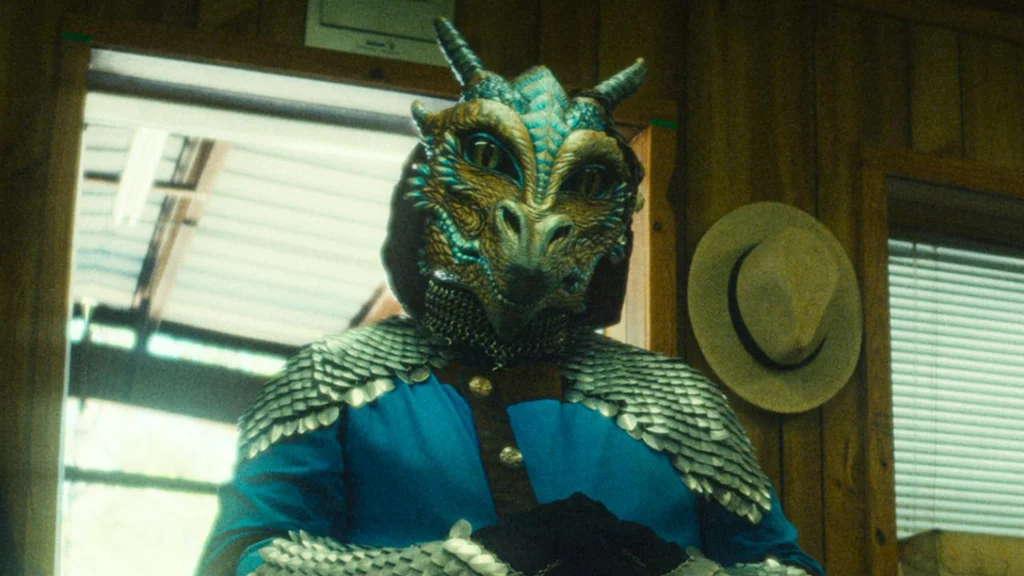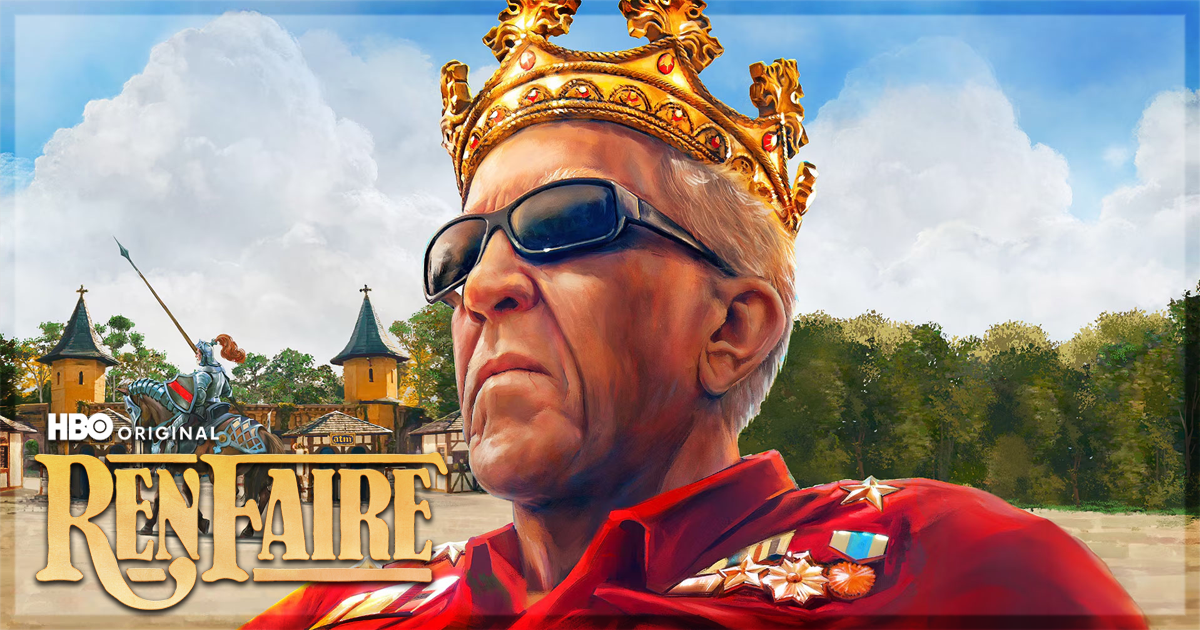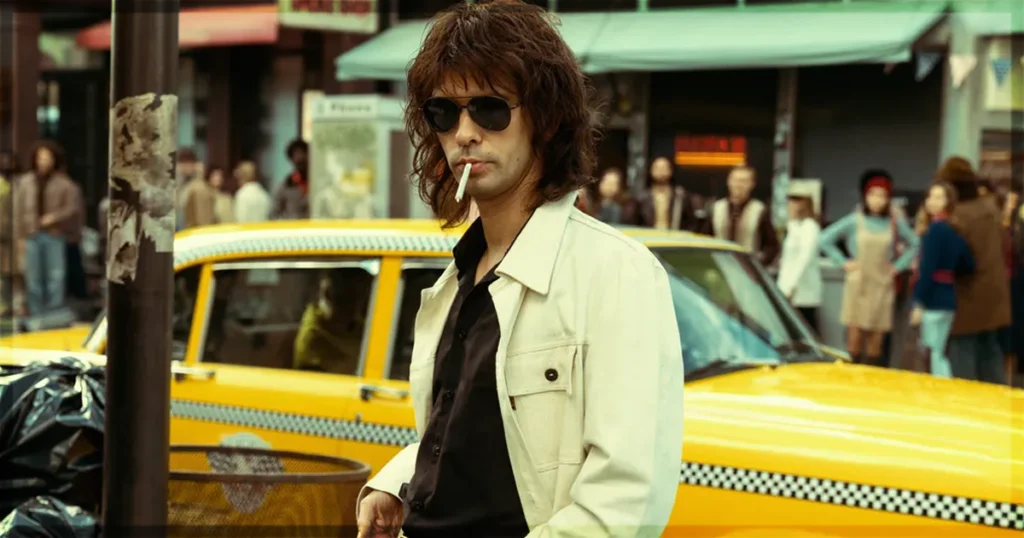In the first seconds of the first episode, Daddy’s Dyin’, Who’s Got the Will? – the public sees an older man wearing a crown on a throne. This king is George Coulam, the founder and owner of the Texas Renaissance Festival (TRF), the biggest fair of its kind. Roughly five hundred thousand people visit the themed park during the seasons. After fifty years of existence, King George built an empire, emerging as an attraction within a city in Texas, Todd Mission, of which George is also the mayor. Lance Oppenheimer’s three-part documentary Ren Faire documents the beginning of a succession.
He is eighty-five and wants to dedicate the rest of his life to artistry, gardening, and a companion. The intrinsical aspect of the succession journey is that he does not have a wife or children. Three characters emerge as potential heirs: Jeff, the current general manager of TRF. Darla, the vendor manager. And Louie, the kettle corn lord.

Documentary approach and fiction techniques in Ren Faire
Lance mixes the documentary approach with fiction techniques to create a sense of absurdity and fantasy of that place. Cinematographer Nate Hurtsellers uses a wide lens and bright lightning to transport the public to a parallel world, alongside the editing that comproves that. The festival generates millions of dollars each season, and plenty of people are interested in doing business there. In this sense, the directing uses a kinetic montage style of following each member’s task during the season, transmitting a constant sense of change and responsibility.
It demonstrates how tough it can be for an eighty-five-year-old man whose health is only decreasing. The episode’s pace is fast; even though a lot is happening on the screen, it does not feel like a wave of information thrown at the viewer. Oppenheimer’s use of fiction helps to establish breathers narratively, such as the character of a dragon who breaks the fourth wall, conversing with the public and Jeff.
Ren Faire as a study of George’s persona
Each part works in a manner that paints this canvas of George’s personality. Part one shows how he only thinks about himself and earning money. It works in a fascinating discussion of the role of artistry, loyalty, and authoritarianism. George is rude, selfish, and addicted to power and controlling people around him. Episode 02, Make Big Choices, deepens the study of his persona. We learn about his fifteen-year marriage with Gayle, which ended because of his attitude towards her. It also shows a thirty-five-year friendship finished abruptly because of his explosive temper.

He is so obsessed with control that even while looking for a partner. He wants her exactly how he wishes. George signs up on several sugar daddy websites, where his assistant scrolls to find a twenty-something woman who he wants to conquer through his money. There are two dates with twenty-four-years old girls that are uncomfortable to watch, and how he cares only for his desires and rejects one of them for having breast surgery, something he is disgusted by. All three episodes present him as the creator of something enormous. However, it also shows how terrible of a human being he is and how his capitalist eagerness destroyed his ability to live with other humans.
Even with the figure of George as the central piece of the chess, the other pieces are hugely flawed. Louie wants to feel superior for being a businessperson, but this is only possible because of his family’s money. He feels he is the one who must buy the fair and is the one competent to manage it. He is as shallow as his intents, a person who hides behind money to give meaning to his life. Darla is a skilled woman, but her ambitions blind her worldview, and she gets lost in her actions.
What it takes to be the King
At a point, she becomes the primary general manager of the festival in episode 03, We’re Done!, and it is obvious how fast she rises and falls. Jeff is a skilled actor but has a limited view as a manager, and he may not have the traits necessary to become the king. Darla says: “Jeff can never wear the crown. He’s a follower, not a leader”. Throughout the third episode, this affirmation is correct, but he grew as a professional there and returned as an entertainment director.
Alongside the marvelous development of its four primary subjects, their ambitions diminish their sense of reality. Ren Faire delivers an experience that engages for its world-building, visuals, and musicality. Ari Balouzian uses harps, flutes, drums, and choirs to emulate a medieval sound that brings a bit of Nicholas Brittell in Succession. As Brittell does in the TV sensation, Balouzian injects the tension necessary to build the climax of this curious story. Jesse Armstrong’s historical show is a spot-on comparison to this doc, a group of lunatic rich people (George and Louie) and middle-class folks (Darla and Jeff) looking to ruin their party.
Ren Faire is a curious three-part documentary that creates a highly engaging story that delivers beautiful visuals, great editing, and beautiful music in only three hours. It experiments with its format and plays with the absurdity of the subjects freshly and entertainingly.
Ren Faire is now streaming on MAX.
Learn more about the documentary show, including how to watch Ren Faire, on the MAX website.
You might also like…
‘Limonov: The Ballad’ Review: A Biopic Gone Wrong (Cannes)


